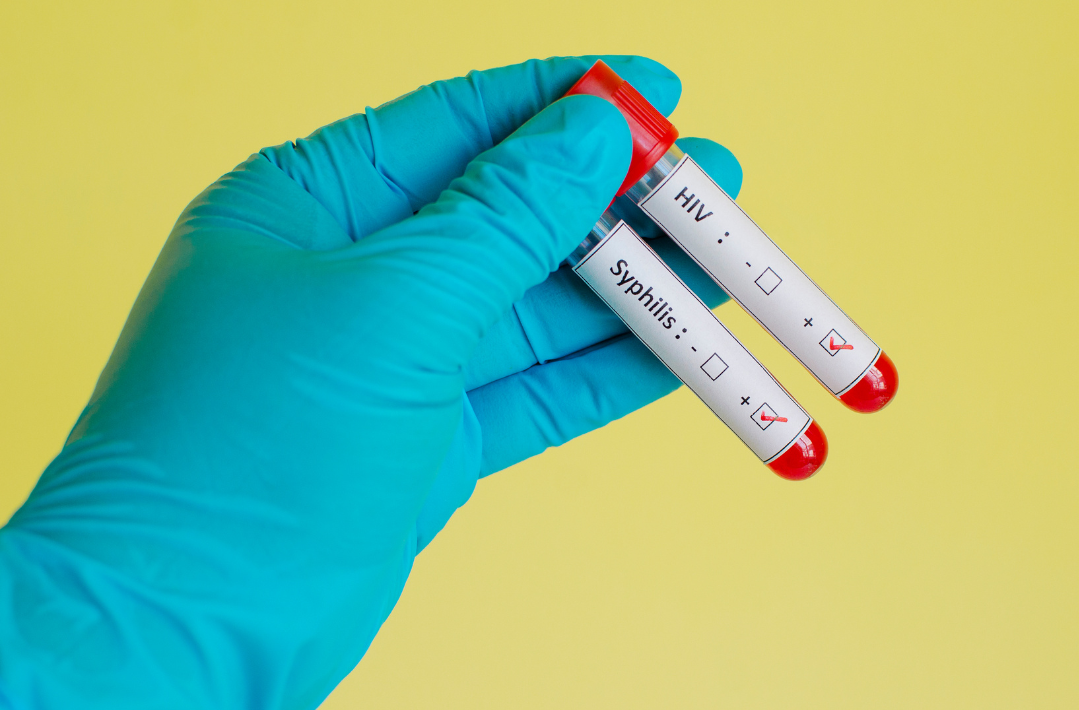As the name explains, Sexually Transmitted Infections (STIs) or Sexually Transmitted Diseases (STDs) are infections that spread through sexual contact. Sexual intimacy, be it vaginal sex, anal sex or oral sex, can easily lead you to catch an STI if your sexual partner has one.
Some common STIs are Genital Herpes, Syphilis, Chlamydia, Gonorrhea, Trichomoniasis, Genital Warts, HIV (Human Immunodeficiency Virus) and HPV (Human Papillomavirus). Out of these, some are curable STDs, while some are STDs with no cure. Let’s discuss this further! 1
Which STDs are permanent?
HIV, Hepatitis B, Herpes and the Human Papillomavirus (HPV) are STDs that cannot be cured. According to the Centres for Disease Control and Prevention (CDC), HIV, Chlamydia and Gonorrhea can spread through sexual contact via sexual fluids like semen. On the other hand, incurable STDs such as Herpes and HPV can spread through genital skin-to-skin contact. It means that the condom, which is one of the most effective means to protect against STDs, may not be as effective against Herpes and HPV.2
Which is the scariest STD?
If untreated, most of the common STDs can lead to fatal and life-threatening outcomes. However, if detected and treated in time, most of these diseases can either be completely cured or managed to the point that they are untransmittable.
According to WHO, more than 30 different bacteria, viruses and parasites are known to be transmitted through sexual contact. Eight of these pathogens are linked to the greatest incidence of sexually transmitted diseases (STDs).
Viral STDs such as HIV and herpes are STDs which are not completely curable. As a result, they can remain in the human body lifelong. Proper management of HIV and Herpes requires that one gets tested frequently. Especially in the case of HIV, there may be no outward symptoms because the virus may remain dormant in the body and keeps replicating till it completely destroys the immune system and becomes full-blown AIDS. At that point, the most likely outcome is death due to a variety of infections and an extremely weakened immune system that is not capable of fighting those infections. Others, like hepatitis B and human papillomavirus (HPV), can be avoided with vaccinations but not treated as they are non-curable STDs. In their case, early detection and management are the keys. It is also possible for the immune system to battle the hepatitis B and HPV viruses. But in some circumstances, these viruses can settle in for the long haul, causing chronic infections that can last a lifetime and even lead to cancer.
Another concerning STI is syphilis. According to Planned Parenthood, if left untreated, syphilis can even lead to death. Before the invention of the antibiotic called penicillin, if someone caught syphilis, it was understood that they would eventually pass away. Syphilis has been in existence since the 15th century. Now, with the advancement of medicine, a simple course of antibiotics can cure syphilis but it requires early testing. Similarly, if left untreated, gonorrhea can lead to infertility.3
What are the 4 new STDs?
Four new diseases were recently identified by scientists, and it was determined that they can be sexually transmitted. Not much information about these exists, but here is what you need to know:
1. Neisseria meningitidis:
N. meningitidis infects the brain and spinal cord’s protective membrane. According to recent estimates, approximately 5-10% of adults carry this bacteria in the back of the nose and throat. Therefore, the roots of transmission are oral sex, deep kissing and other mechanisms where infected droplets can pass from the nose and throat of the infected person. According to recent studies, oral sex is the most common method for this bacteria to spread. Fortunately, vaccines exist against the main types of N. meningitidis.
2. Mycoplasma genitalium:
M. genitalium is a bacteria that causes symptoms similar to chlamydia and gonorrhea along with the irritation of the urethra and the cervix. It is currently not that prevalent. According to some estimates, it infects approximately 1-2% of people and is more prevalent among young adults. Like the majority of STDs, M. genitalium can cause pelvic inflammatory disease, which can result in miscarriage, infertility, and other problems if left untreated. Condoms are the only sure-shot way to prevent infection.
3. Shigella flexneri:
S. flexneri is a disease that causes severe diarrhea that is blood and mucus-filled. Contact with human faeces causes it to spread. S. flexneri bacteria is typically discovered when individuals ingest unhygienic food and water sources that may contain faecal matter. This can also be sexually transmitted when someone engages in anal sex or some other type of anal penetration, switches to oral sex, or when the anal area is stimulated orally. Making sure there is no chance of anal sex-related faeces entering the mouth is, therefore, the greatest form of prevention.
4. Lymphogranuloma venereum (LGV):
LGV is a bacterial disease that spreads during unprotected sex and can cause serious intestinal problems. At first, LGV can appear as a genital pimple or blister. However, LGV is also capable of causing symptoms similar to inflammatory bowel disease (IBD) and fistulas and strictures. Those infected with LGV are at a higher risk of getting HIV. Condoms are a means to prevent the spread of LGV.4
Which is the rarest STD?
All STDs can be life-threatening if not taken care of in time. There is no STD that can be classified as rare or most common. The rate of a particular STD can vary depending on the region and the class of people it affects.
The most common STDs are gonorrhea and chlamydia among the other types of STDs, especially among people aged 15 and above. Similarly, HIV and hepatitis are STDs that can be passed from person to person via needle sharing, blood transfusion, and other means. To reduce your risk of contracting an STD, it is crucial that you use protection whenever you engage in any sexual activity and also know about your partner’s sexual health status. Behaviours and your lifestyle, therefore, can greatly influence your risk.
If you are afraid that you may have an STD, the best course of action is to get tested right away rather than waiting for symptoms. Most STDs do not show any symptoms (i.e. they are asymptomatic). Despite being present in your body, they may not show any signs or symptoms of their existence. In that case, you may miss out on the period of early-stage detection. Regular STI testing can however, be helpful to have the upper hand and detect the presence of an STI if you are sexually active. Antibiotics and other appropriate treatments can be used to treat curable STDs. Early detection and medication can help to reduce the symptoms of incurable STDs. For example, early detection of HIV with regular antiretroviral treatment can reduce the viral load to nearly undetectable levels.5






